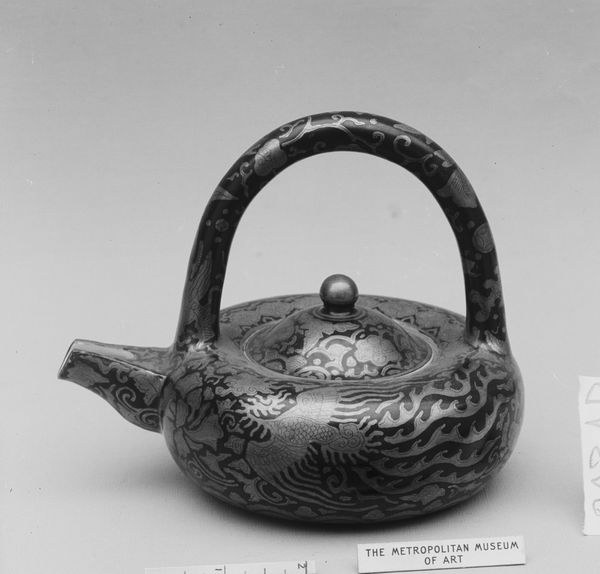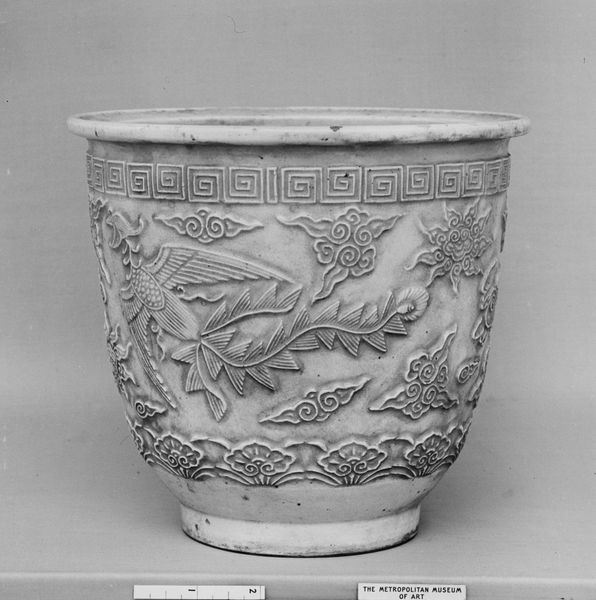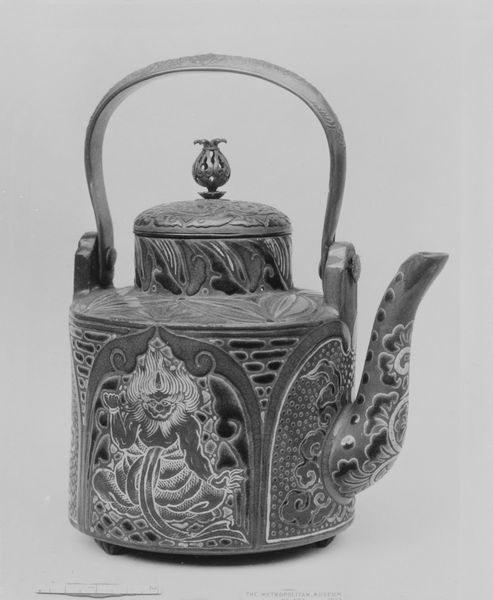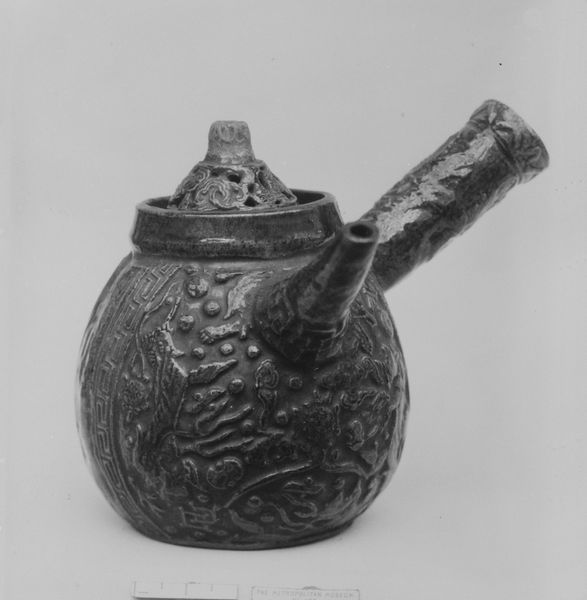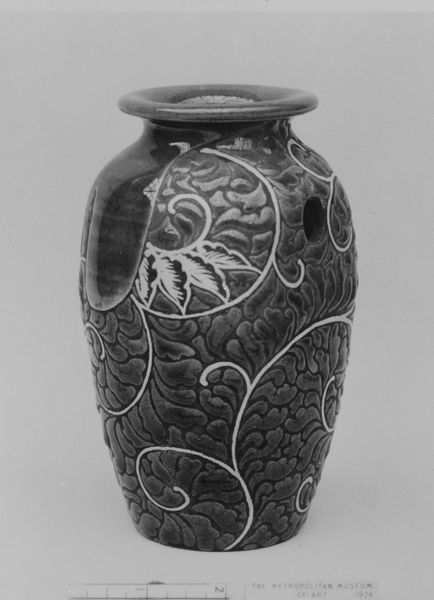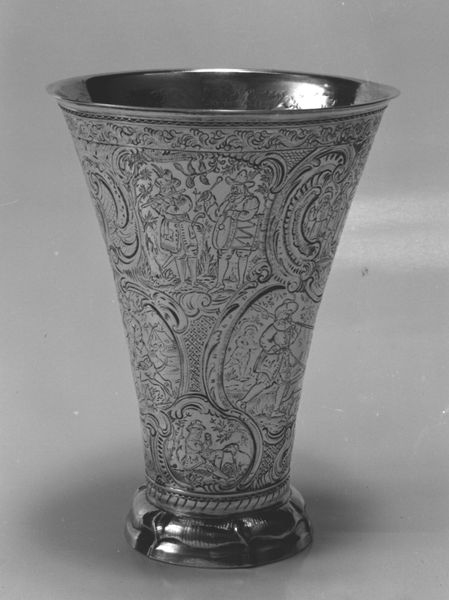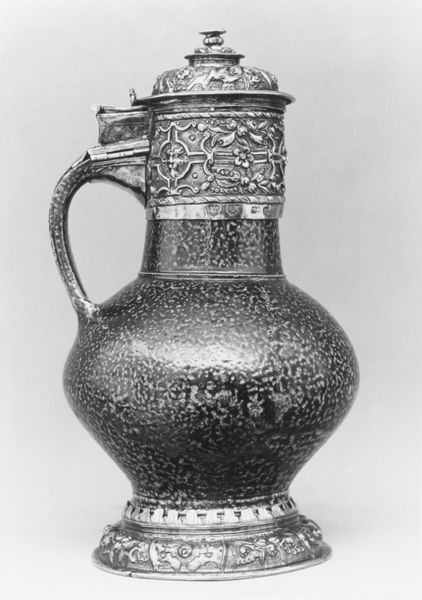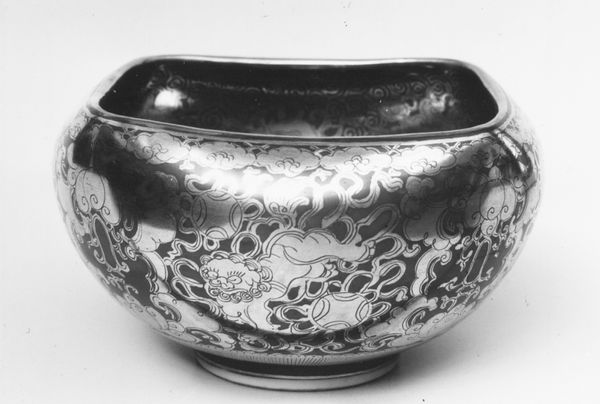
ceramic, sculpture
#
sculpture
#
asian-art
#
ceramic
#
sculpture
#
decorative-art
Dimensions: H. 6 3/4 in. (17.1 cm); Gr. W. 7 3/8 in. (18.7 cm)
Copyright: Public Domain
Curator: Before us stands the 'Clove Boiler,' a ceramic sculpture dating back to 1780. Rakutozan is credited as its creator, and it currently resides at the Metropolitan Museum of Art. Editor: Immediately, I’m struck by the complex surface detail and its functional shape. It's decorative art, absolutely, but there’s a tactile quality to the raised designs that beckons you closer. I also find myself considering the scale – it has a powerful presence even in this image. Curator: Yes, the sculptural relief really draws the eye. What seems most striking is how this particular type of clove boiler became a highly valued and recognizable emblem of status in Japanese society. It functioned as both utilitarian vessel and aesthetic declaration, displayed proudly. Editor: Interesting. The prominent flower motif, which is some sort of chrysanthemum variety perhaps, along with the swirling vegetative patterns give it this somewhat asymmetrical, almost organic unity. It's also playing a critical role structurally to move your eye across the surface. How does that reflect on Japanese artistic tradition at the time? Curator: During this time, the rising merchant class began acquiring status symbols often emulating or subtly altering those used by nobility. It signifies cultural shifts—commodities transforming into cultural signs that communicate meaning beyond simple function, subtly nodding to a societal aspiration towards elegance and prosperity. Editor: The handles look rather intriguing as well. These abstract leaf-like formations don’t serve a particularly functional role. They really amplify this sense of intentional artistic flair. Their curling, rhythmic quality serves an aesthetic purpose more than anything, amplifying a visual cadence. Curator: The form truly reflects its historical setting, navigating a desire for display amid evolving cultural values. The 'Clove Boiler' as objet d'art became symbolic beyond measure, revealing shifts within Edo-era Japanese society. Editor: A beautiful object that is visually engaging, to be sure, but so wonderfully wrapped in layers of cultural narrative.
Comments
No comments
Be the first to comment and join the conversation on the ultimate creative platform.
